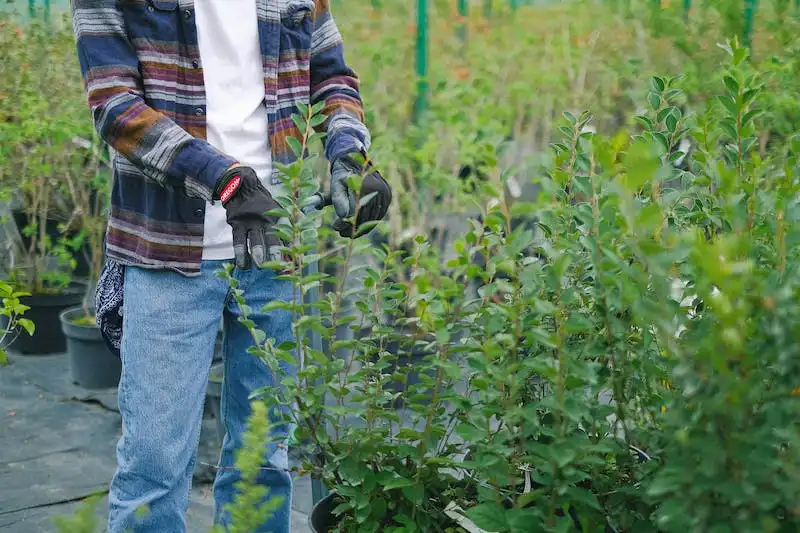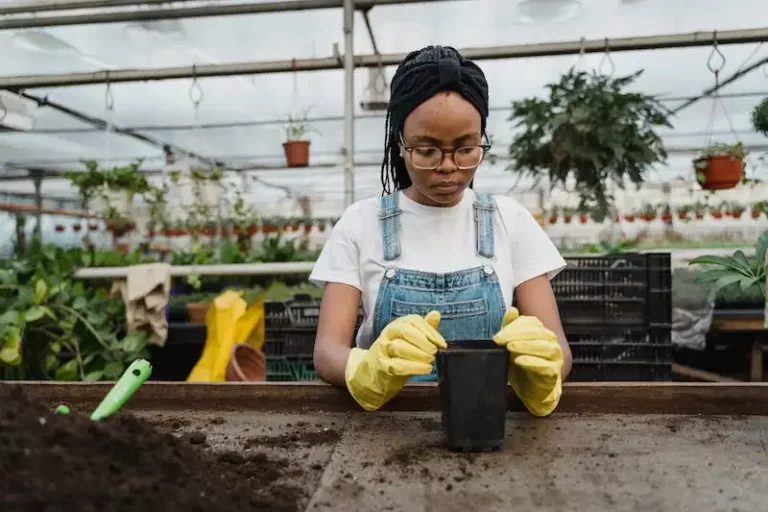Beets, a delicious and nutritious vegetable, can be grown right in your own backyard. Whether you have a large outdoor space or are limited to a small balcony, growing beets in containers is an organized and efficient way to have fresh beetroots at your fingertips. Knowing how to grow beets in containers, without the need for a large garden or knowing everything about gardening, can help you enjoy this vibrant and versatile root vegetable.
Beetroots require a well-draining and slightly acidic soil to thrive. You can use a potting mix specifically made for vegetable gardens or create your own by combining potting soil with some compost. Make sure the container has drainage holes to allow excess water to escape and prevent waterlogging. Place the container in a sunny spot outdoors where the beets can receive at least 6-8 hours of direct sunlight each day.
Frequent watering is essential to keep the soil consistently moist, but not waterlogged, as this can lead to root rot. A good rule of thumb is to water whenever the top inch of soil feels dry to the touch. Beets are heavy feeders and will benefit from regular fertilizing. Use a balanced fertilizer or one that is higher in phosphorus to promote root development.
Beetroot plants can be started from seeds or transplanted as seedlings. If starting from seeds, sow them directly into the container to avoid the need for transplanting later. Sow the seeds about half an inch deep and space them 2-3 inches apart. Once the seeds germinate and sprouts appear, thin them to leave plenty of space for the roots to develop. If transplanting seedlings, make sure to handle them gently to avoid damaging the roots.
Beets are a cool-weather crop and can be grown during the spring or fall season. In warmer regions, it is best to grow them during the cooler months to prevent bolting. Be on the lookout for common beet diseases, such as powdery mildew or leaf spot, and take appropriate measures to prevent or treat them. Weeds can also be a nuisance in the container, so make sure to regularly remove them to provide the beets with the necessary space and nutrients.
Harvesting beets is a rewarding task. You can start harvesting the roots when they reach a size of about 1-2 inches in diameter. To harvest, gently loosen the soil around the beet and pull it out, being careful not to damage the leaves. For optimal taste and freshness, wash the harvested beets thoroughly to remove any dirt or debris. They can be stored in the refrigerator for a few weeks, but they are best enjoyed as soon as possible.
Now that you have a guide on growing beets in containers, you can enjoy the benefits of having your own beetroot supply. With proper care and regular maintenance, you can have a bountiful harvest of tasty beets. Whether you are an experienced gardener or a beginner, growing beets in containers is a rewarding and enjoyable gardening adventure.
Growing Beets in Containers
Gardening is a popular hobby for many people, but not everyone has access to a large outdoor space. If you find yourself in this situation, don’t worry! You can still grow delicious beets right in a container. By using a potted method, you can enjoy the advantages of having your vegetable garden without the need for a ground spot.
One of the first things you’ll need to do is choose the right type of container. Beets have long roots, so a deep pot is essential. A pot that’s around 12 inches deep should provide enough room for the beets to grow properly. Make sure the container has drainage holes to prevent waterlogging. You can use any type of container, such as clay, plastic, or wooden, as long as it meets these requirements.
Next, you’ll need to fill your container with well-draining soil. Beets prefer loose and well-aerated soil, so a mixture of potting soil and compost works well. You can also add perlite or vermiculite to help with drainage. Beets thrive in full sun, so find a sunny spot where your container can receive at least 6 hours of direct sunlight daily.
When it comes to watering, beets like their soil to be consistently moist, but not waterlogged. Water your container whenever the top inch of soil feels dry, and make sure to water deeply to encourage the roots to grow deeper. It’s important to keep the soil evenly moist throughout the growing season.
Before planting your beet seeds, it’s a good idea to soak them in water for about 24 hours. This helps with germination. You can then sow the seeds about 1 inch apart and 1/2 inch deep in the container. Once the seedlings emerge, thin them to about 3 inches apart to give each plant enough space to grow.
Beets are a cool-season crop, so they prefer cooler temperatures. They can tolerate light frost and even taste sweeter after a cold spell. However, be mindful of extreme heat, as it can cause the beets to bolt and produce less desirable roots. If you live in a region with hot summers, consider providing some shade for your container during the hottest part of the day.
As your beets grow, you can also take steps to eliminate weeds and pests. Hand-pulling weeds is often the best method in a container garden. You can also use organic pest control methods, such as introducing beneficial insects or using a homemade insecticidal soap. Regularly monitor your plants for any signs of damage or infestation and take appropriate action.
Beets are ready to be harvested once their roots have reached a desirable size, typically around 2 to 3 inches in diameter. You can gently lift the beets out of the soil, being careful not to damage their delicate skin. Harvesting the entire plant is usually the best approach, as the beet greens can be cooked and enjoyed as well.
Growing beets in containers can be a rewarding experience for any gardener. By knowing the right techniques and providing the optimal growing conditions, you can enjoy a bountiful harvest of this versatile vegetable. Whether you’re a seasoned planner or a novice gardener, growing beets in containers is a great way to add some color and flavor to your meals.
So don’t limit yourself to traditional gardens – potted beets can thrive just as well, if not better, in a controlled environment. With our ultimate guide and expert tips, you’ll have a successful beet growing experience right on your doorstep!
Perks of Growing Beets in Pots
There are several advantages to growing beets in pots. One of the main perks is that it allows you to easily control weeds. By choosing the right container and following some simple guidelines, you can eliminate the risk of weeds invading your beet plants.
Another perk is that growing beets in containers requires much less space compared to traditional garden beds. You can easily place the pots on your patio, balcony, or any sunny spot where your plants can get enough sunshine to thrive.
Moreover, pots also provide you with the ultimate control over the soil conditions. You can ensure that the earthy root vegetables get the well-draining and nutrient-rich soil they require. By acclimating the plants gradually and fertilizing them properly, you can grow healthy and delicious beets.
In addition, growing beets in pots also keeps them away from harmful diseases and pests that may affect your outdoor garden. By following a strict caring routine and keeping an eye out for any potential issues, you can minimize the risk of pests or diseases affecting your crop.
If you’re wondering what the best way to start growing beets in pots is, here are a few tips:
| 1. | Choose a pot that is at least 12 inches deep and has good drainage holes. |
| 2. | Fill the pot with well-draining potting mix enriched with compost or well-rotted manure. |
| 3. | Sow the beetroot seeds directly in the container or start with 3-4 week-old seedlings. |
| 4. | Water the plants well and keep the soil consistently moist, but not waterlogged. |
| 5. | Place the pot in a sunny location, where the plants get at least 6-8 hours of direct sunlight. |
By following these guidelines and caring for your beets well, you can enjoy a bountiful harvest of fresh and nutritious beets right at home, without the need for a large garden.
The Best Beet Varieties to Grow in Containers
When it comes to growing beets in containers, it’s important to choose the right beet varieties. Knowing which beet varieties are best suited for container gardening is crucial for a successful harvest. This guide will help you make an informed decision on which beet varieties to grow in containers.
Beets are known for their deep roots, so it’s important to choose beet varieties that have shorter roots. These varieties are more suitable for planting in containers with limited soil depth.
One popular beet variety for container gardening is the “Babybeat” beet. This variety has compact roots and is great for small-space gardening. Another great option is the “Red Ace” beet, which produces uniform roots and has a sweet taste.
If you’re looking for a beet variety that is easy to grow, then the “Bull’s Blood” beet is a must-have. This variety is known for its vibrant burgundy leaves, making it a beautiful addition to any container garden.
In addition to these common beet varieties, there are several other options that you may want to consider. The “Detroit Dark Red” beet is a classic variety that is popular for its earthy flavor. The “Golden” beet is another great choice, as it has a sweet and mild taste.
When it comes to planting beet varieties in containers, it’s important to give them enough space to grow. Beets require at least 3 inches of space between each plant to allow for proper root development. If you’re using a planter box, make sure it’s at least 12 inches deep to accommodate the beet’s roots.
Beets are cool-season vegetables, so it’s best to start planting them early in the season. These vegetables can tolerate a significant amount of cold, so you can start planting them as soon as the soil can be worked in early spring.
Before planting your beet varieties, make sure to prepare the soil properly. Beets prefer well-draining soil, so mixing in some compost or organic matter can help improve drainage. Also, make sure the soil is loose and free of clumps to allow the roots to grow easily.
Once your beet varieties have sprouted and are growing well, make sure to provide them with adequate water. Beets require consistent watering to keep the soil moist but not waterlogged. In hot weather, you may need to water your beets more frequently to prevent them from drying out.
Beets can be susceptible to pests and diseases, so it’s important to take precautions to protect your plants. Some common beet pests include aphids, flea beetles, and leaf miners. To help repel these pests, you can plant companion plants such as marigolds or onions around your beets.
If you’ve never grown beets before, it’s a good idea to consult a gardening guide or speak to a knowledgeable gardener or lecturer for more detailed advice. There are also plenty of online resources available that can provide you with all the information you need to successfully grow beets in containers.
With the right beet varieties and proper care, you can enjoy a bountiful harvest of delicious homegrown beetroots. So why wait? Start planning your container garden and get ready to enjoy fresh, tasty beets!




